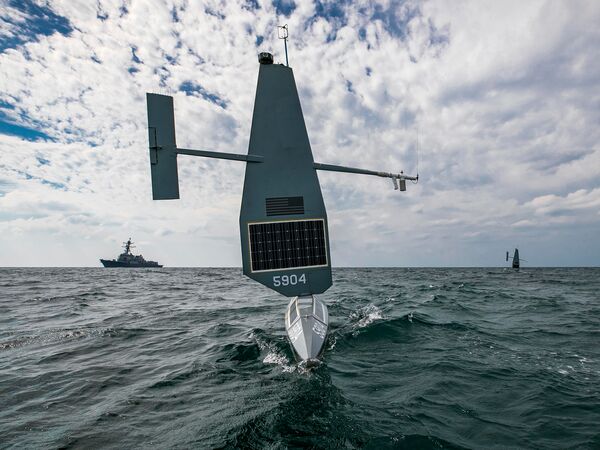
Two US Navy Saildrone Explorer USVs take part in maritime security operations in the Arabian Sea in early 2023. (US Navy)
Saildrone's family of wind- and solar-powered unmanned surface vehicles (USVs) offer a way to free up manned naval assets for more important missions, Richard Jenkins, founder and CEO of Saildrone, told Janes at the Navy League Sea-Air-Space 2024 global maritime exposition in National Harbor, Maryland, on 10 April. The USVs are already operating under contracts with the US Navy (USN) and other agencies, he said.
The wind-powered vehicles are nearly silent in the water, making them an ideal platform for active and passive acoustic sensors, such as the Thales Australia BlueSentry thin-line, towed-sonar array, he said. Saildrone announced an agreement with Thales Australia to integrate the BlueSentry on its Surveyor USV during Navy League 2024. The array can monitor signatures above and beneath the water, making it suitable for anti-submarine warfare (ASW) and maritime domain awareness (MDA) missions, including homeland security applications such as counter-smuggling, Jenkins said.
Saildrone offers three vehicles: the 7 m Explorer, 10 m Voyager, and 20 m Surveyor, which perform three primary missions such as meteorology, seafloor mapping, and above-water surveillance. The Surveyor can map to the full depth of the ocean, about 11,000 m, while the Voyager performs shore mapping to depths of around 300 m. An active multibeam system is integrated to map the water column. A vehicle-mounted winch lowers the probe to a depth of about 500 m to collect data, said Jenkins.
Looking to read the full article?
Gain unlimited access to Janes news and more...







